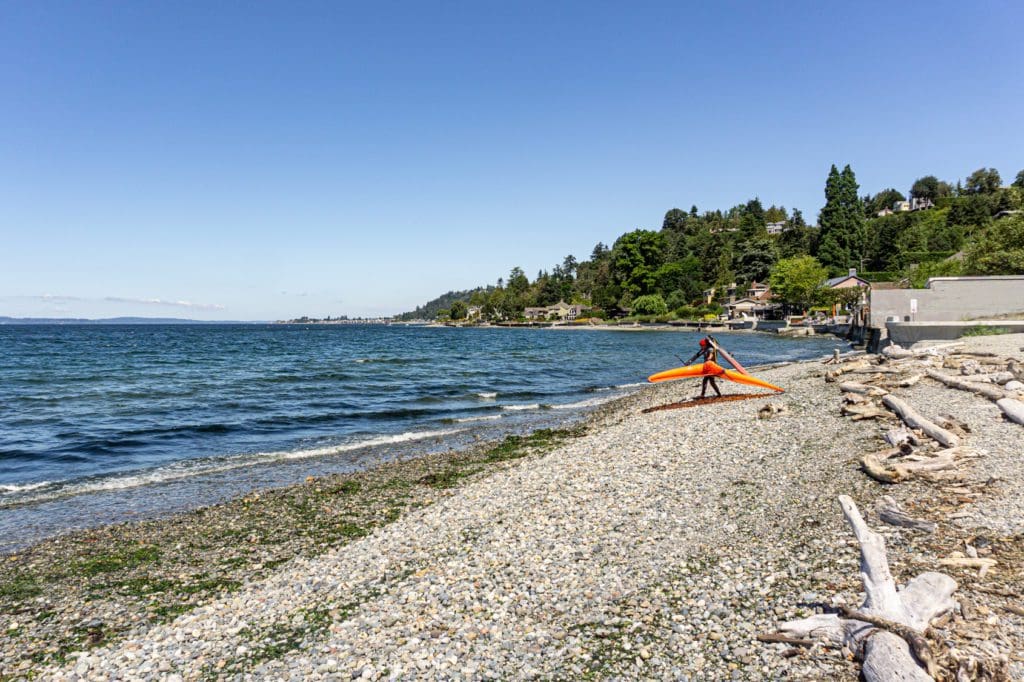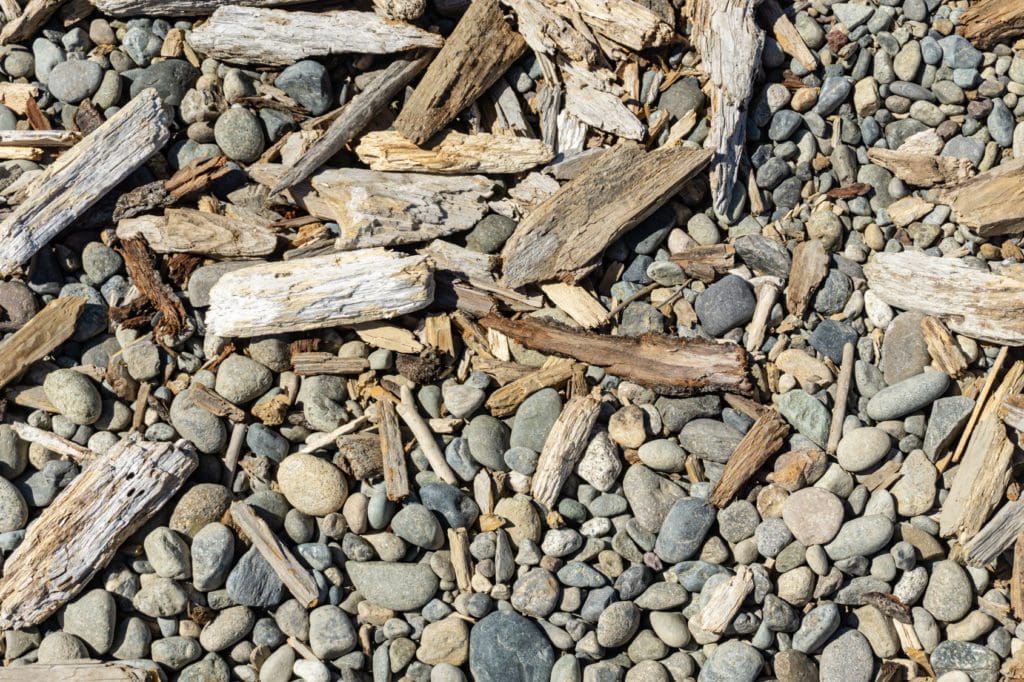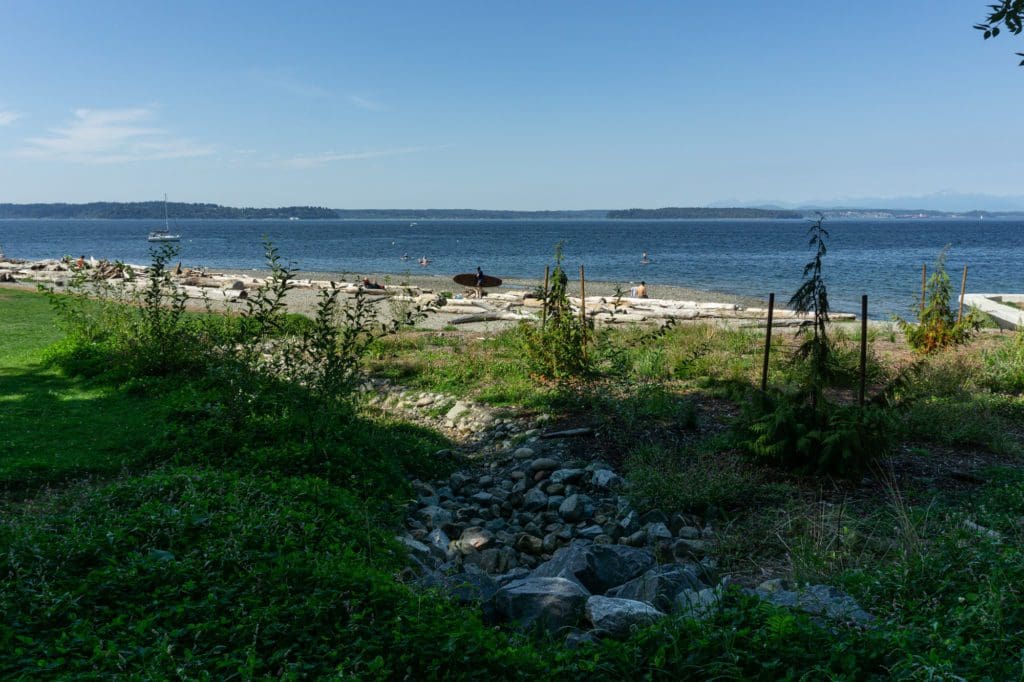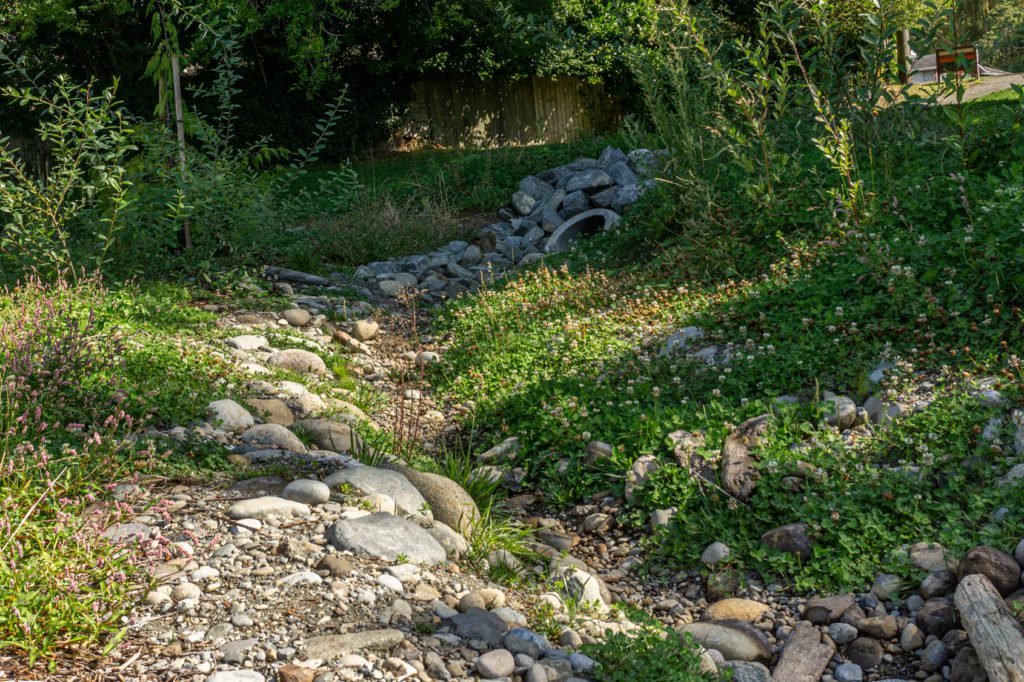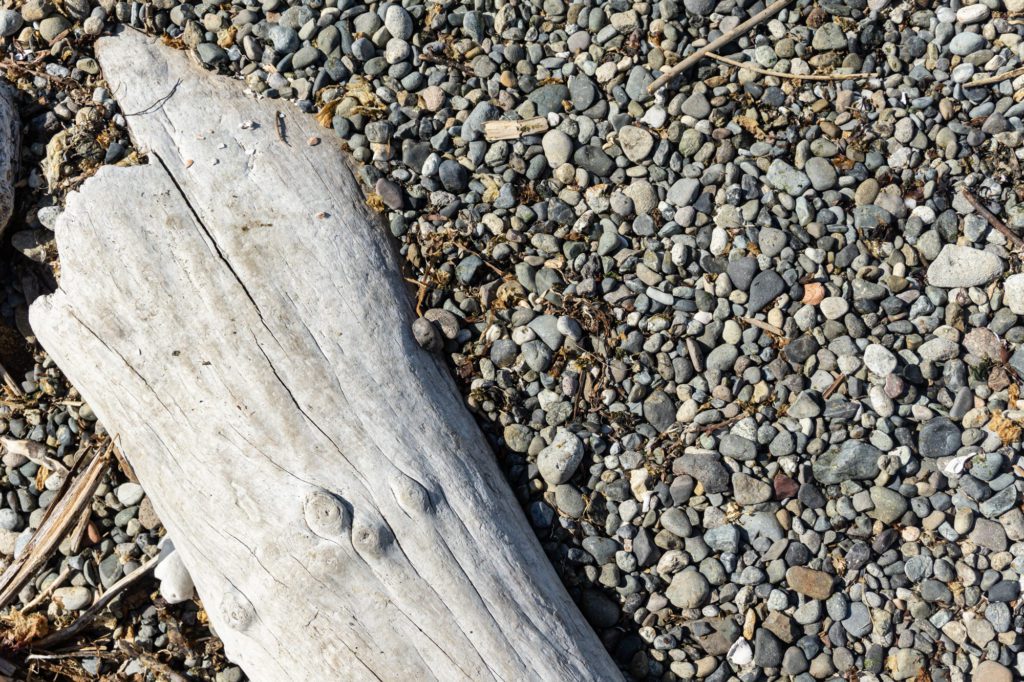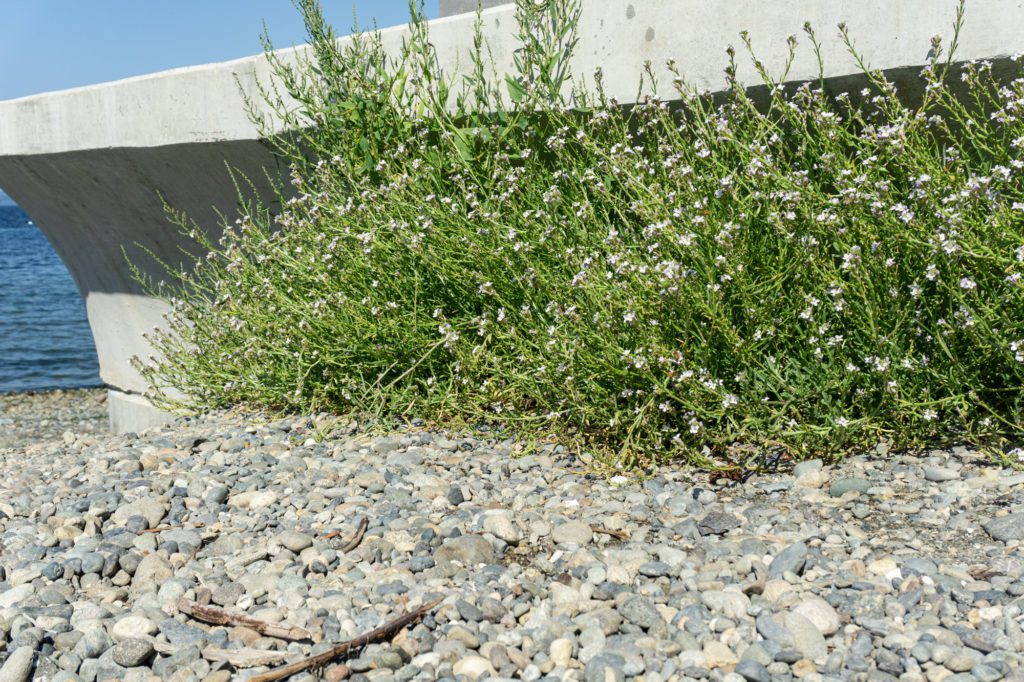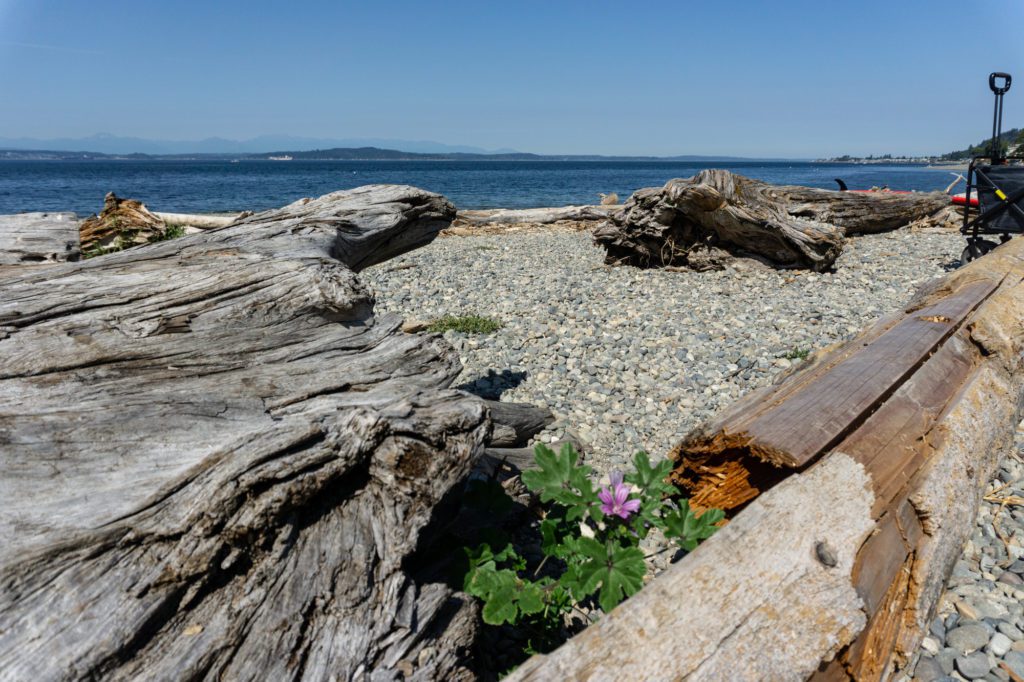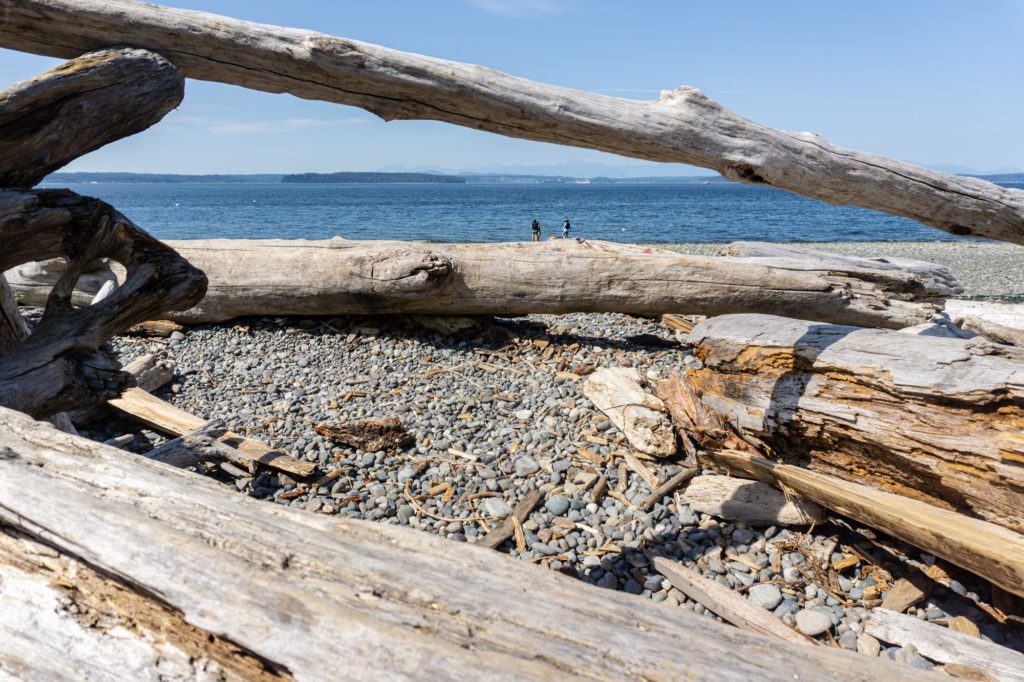LOWMAN BEACH PARK
Date: 2021-2022GET A QUOTE
Description
Lowman Beach Park is a small gem in West Seattle. At about 1.5 acres, it includes 300 feet of shoreline and boasts views of the Olympics, Alki Point, and Williams Point. The park has been around for almost a century and has seen many additions and renovations. The most recent $1.2 million renovation included the removal of the remnants of a 1950s-era seawall. The removal of the seawall led to unobstructed views of the water. A modified seawall replaced the demolished structure. Our material was used to restore the beach habitat behind the demolished seawall and to establish a drainage area for Pelly Creek.Erosion and sea-level rise threaten the beach, so shoreline restoration was integral to this project.
Materials
1,270 tons of Custom Beach Type 1 Mix*1,650 tons of Custom Beach Type 2 Mix**
80 tons of Gravel Backfill for Walls (4" Minus)
70 tons of 1-Man Streambed Boulders
25 tons of 8" Streambed Cobbles
25 tons of Permeable Ballast
20 tons of Light Loose Rip Rap
20 tons of Streambed Sediment
10 tons of Pond Liner
*Type 1 consisted roughly of 40% 2"–4" streambed cobbles, 30% washed utility sand, and 30% AASHTO #57 (7/8" clean drain rock)
**Type 2 consisted roughly of 50% AASHTO #57 (7/8" clean drain rock), 30% 1½" Drain Rock, and 20% extra coarse utility sand
Highlights
After removing the remaining seawall, the beach needed to be supplemented with new rock. We mixed nearly 3,000 tons of custom material to match the natural environment of Lowman Beach Park.Our construction aggregates were also used to reconstruct the drainage of Pelly Creek into the Puget Sound.
Check out our article about this project.
Check out the Seattle Parks and Recreation page about Lowman Beach Park and the project page here. Check out the original 2017 Feasibility Study Report and the 2020 Design Plans.

